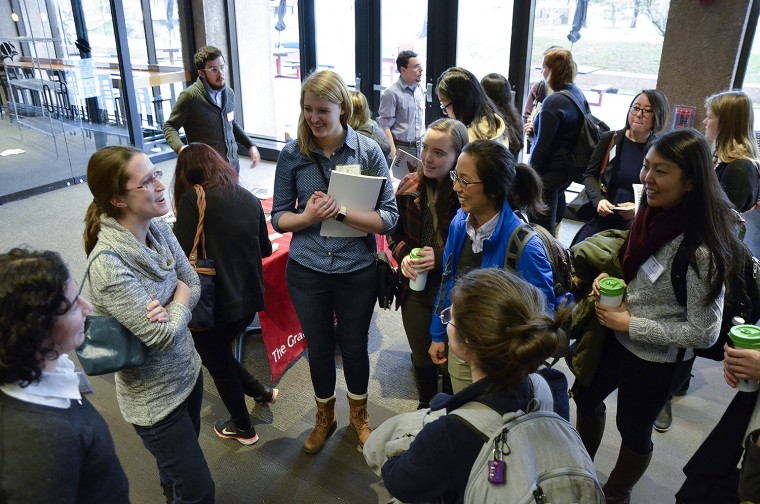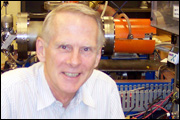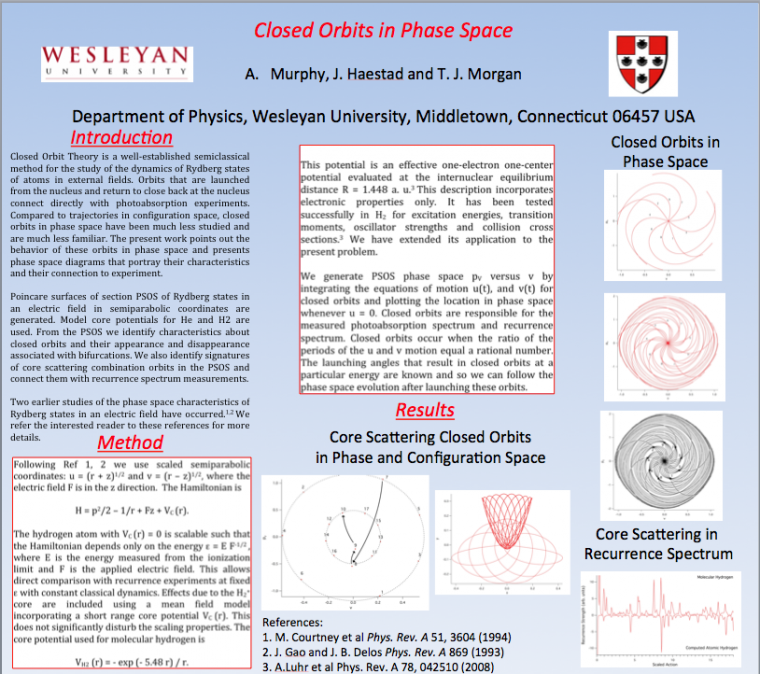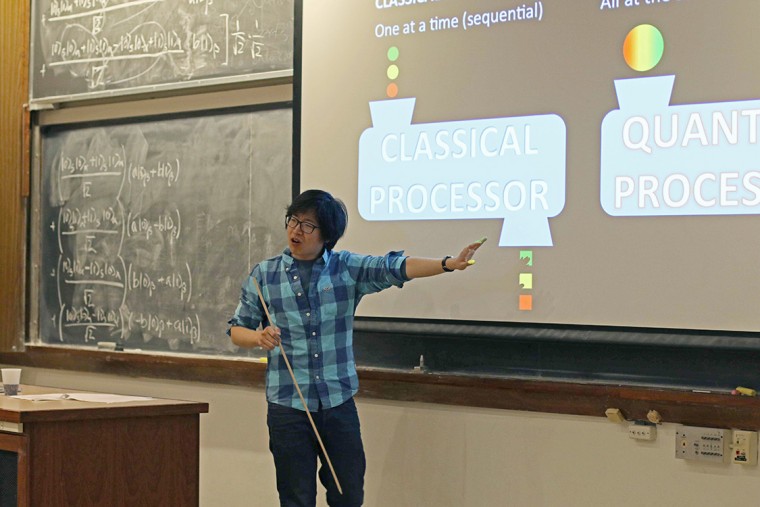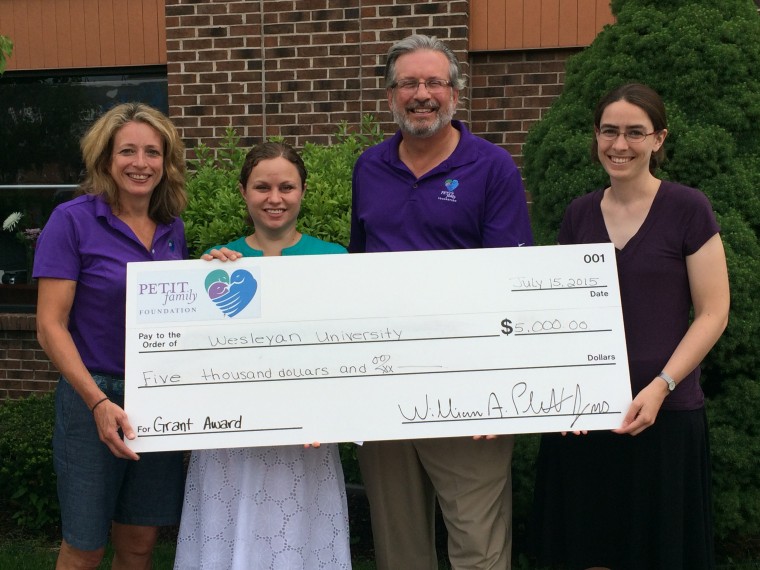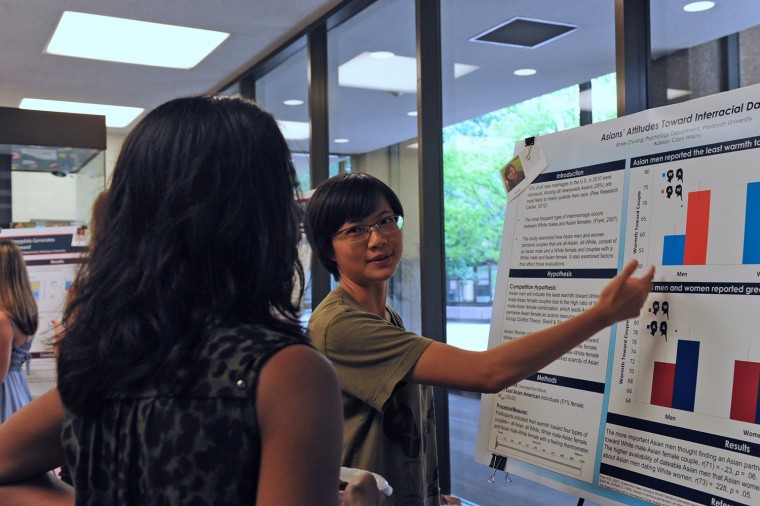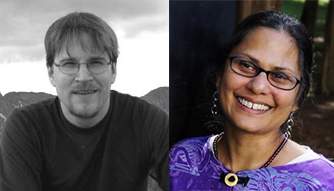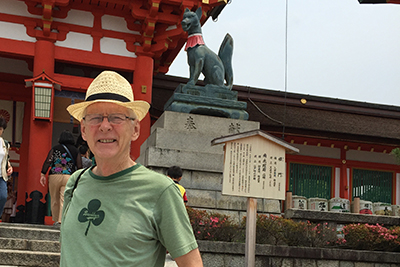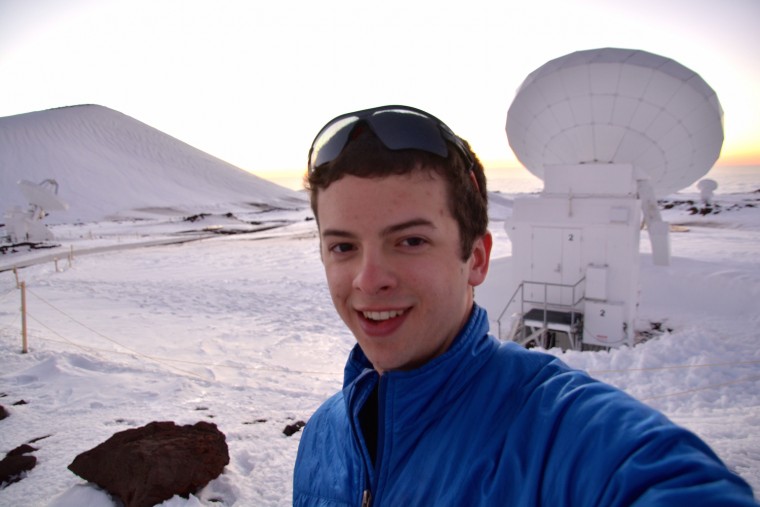More than 200 women undergraduates from the Northeast attended the American Physical Society Conferences for Undergraduate Women in Physics (CUWiP) Jan. 15-17 at Wesleyan. Wesleyan was one of nine institutions from around the country to host a conference.
The APS CUWiP provides female physics majors with the opportunity to experience a professional conference, information about graduate school and professions in physics, and access to other women in physics with whom they can share experiences, advice and ideas.
The program included panel discussions about graduate school and careers in physics, presentations and discussions about women in physics, laboratory tours, student research talks, a student poster session, banquet and career fair.
The American Physical Society (APS) named Clara Moskowitz ’05 the Woman Physicist of the Month for December 2015. A senior editor at Scientific American, she was an astronomy and physics double major at Wesleyan. It was in her senior year that she discovered her “favorite part” of her undergraduate career: her thesis. “I was fascinated by science from a very young age,” she says, “but so many people feel separated from science—as though they can’t get it. I realized that I like writing and I like to communicate the concepts for nonscientists.” After earning a graduate degree in science journalism…
Tom Morgan, the Foss Professor of Physics, recently attended an Atomic Molecular Optical International Workshop held in Cuernavaca, Mexico. Morgan presented two invited talks, one on highly excited unusual electronic configurations of molecular hydrogen produced by laser excitation and another on laser interactions at the interface between water and air. These topics elicit novel dynamics and provide a different perspective on H2 and H2O behavior. He also took the opportunity to reconnect with a Mexican colleague, Professor Carmen Cisneros, Institute of Physics, University of Mexico, organizer of the workshop, with whom Morgan has collaborated in the past.
Tom Morgan, Foss Professor of Physics, recently attended the 68th Gaseous Electronics Conference of the American Physical Society in Honolulu, Hawaii and presented a poster dealing with the behavior of giant atoms with an electron far from the nucleus in phase space. Andrew Murphy '11 and Jace Haestad '11 contributed to the study. Phase space is a momentum-velocity space that provides a different perspective on atomic behavior. Looking at atoms from this viewpoint provides a mechanism to uncover new insight into their quantum nature. Morgan also took the opportunity to reconnect with a Japanese colleague, Professor Tomoyuki Murakami, at Seikei University, Tokyo,…
Francis Starr, director of the College of Integrative Sciences, professor of physics, received a $282,000 grant from the National Institute of Standards and Technology in September. The grant will support “Heterogeneous Dynamics and Assembly Processes in Soft and Biological Materials," a collaborative research project between Wesleyan and NIST. NIST is expected to fund the project through 2018 with a total amount of $1.66M. Soft and biological materials are commonly composed of synthetic or biopolymers, or are formed as a result of the supramolecular assembly of small molecule, nanoparticle, or protein molecules into dynamic organized structures. These materials are central to developing…
On July 15, the Petit Family Foundation awarded Wesleyan’s Physics Department with a $5,000 grant to support the 2016 Northeast Conference for Undergraduate Women in Physics (CUWiP). The three-day conference, scheduled for January 15-17, 2016, will showcase career opportunities available to physicists through plenary talks, panel discussions and a career fair. Attendees will have the opportunity to network and interact with more than 200 fellow undergraduate women physicists as well as a variety of industrial and academic leaders. Chris Othon, assistant professor of physics, and Meredith Hughes, assistant professor of astronomy, are co-organizing the conference with help from Nisha Grewal ’17 (physics/economics) and Julia…
On July 30, Wesleyan's Summer Research Poster Session took place at Exley Science Center. More than 110 undergraduate research fellows from Math and Computer Sciences, Astronomy, Physics, Chemistry, Molecular Biology and Biochemistry, Biology, Earth and Environmental Sciences, the Quantitative Analysis Center, and Psychology presented research at the event. (Photos by Laurie Kenney) (more…)
For their efforts enhancing undergraduate science education and supporting teaching innovations, two Wesleyan faculty members were named National Academies Education Fellows in the Sciences for 2015-2016. Francis Starr, professor of physics and director of the College of Integrative Sciences, and Ishita Mukerji, the Fisk Professor of Natural Science, professor of molecular biology and biochemistry, received the fellowships while participating in the 2015 National Academies Summer Institute on Undergraduate Education, held June 14-19 at Princeton University. The Summer Institute, a five-day program of discussions, demonstrations and workshops, brought college and university faculty together to develop teaching skills. Co-sponsored by the National Academies and the Howard…
Tom Morgan, the Foss Professor of Physics, is spending the month of June as a visiting professor at Seikei University in Tokyo, Japan. He is collaborating with Professor Tomoyuki Murakami on modeling the evolution of plasma (an assembly of ions and electrons) created by injecting energy into water, "a substance with many interesting properties and applications," Morgan explained. The work focuses on water in both the vapor phase and as a liquid. Morgan also is collaborating on this experimental work with Professor of Physics Lutz Huwel at Wesleyan. Huwel uses a pulse of laser light to provide the energy input to the water. "The…
In its most recent meeting, the Board of Trustees conferred tenure on Hari Krishnan, associate professor of dance. He joins seven other faculty members who were awarded tenure earlier this spring. In addition, seven faculty members were promoted to Full Professor: Mary Alice Haddad, professor of government; Scott Higgins, professor of film studies; Tsampikos Kottos, professor of physics; Edward Moran, professor of astronomy; Dana Royer, professor of earth and environmental sciences; Mary-Jane Rubenstein, professor of religion; and Gina Athena Ulysse, professor of anthropology. Brief descriptions of their research and teaching appear below. Associate Professor Krishnan teaches studio- and lecture-based dance courses on Mobilizing Dance: Cinema, the Body, and Culture…
#THISISWHY In this News @ Wesleyan story, we speak with Sam Factor '14, a graduate student in astronomy. Q: Sam, congratulations on completing your master’s thesis in astronomy! We understand you took your first astronomy class in the fall of your senior year at Wesleyan. What was your undergraduate major and how did your late-developing interest in astronomy come about? A: Thank you very much! As an undergrad, I majored in physics and computer science. During the fall of my senior year I took Introductory Astronomy (ASTR 155). I signed up for the course mainly because I wanted an interesting and relatively easy…


